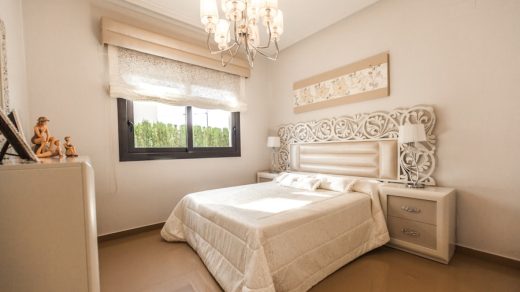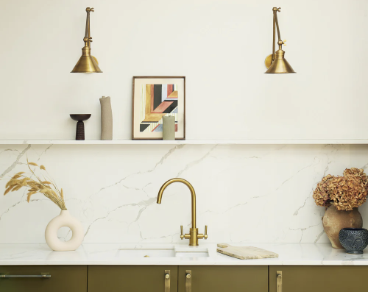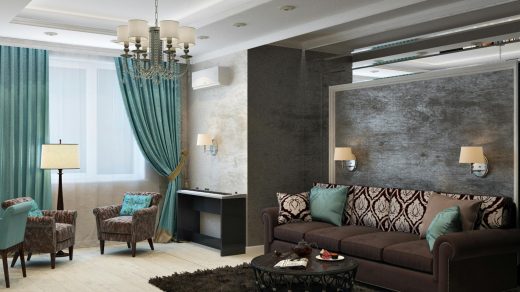Enhance Your Space with a Stunning Ceiling Light
Ceiling lights play a crucial role in home decor. They not only provide essential illumination but also contribute to the overall ambiance and style of a room. Whether you’re looking to create a cozy and intimate atmosphere or a bright and vibrant space, the right ceiling light can make all the difference.
Ceiling lights are not just functional; they are also decorative elements that can enhance the aesthetic appeal of a room. They come in various styles, designs, and sizes, allowing you to choose one that complements your home decor and personal taste. From elegant chandeliers to sleek pendant lights, there is a wide range of options available to suit every style and preference.
Types of Ceiling Lights: Choosing the Right One for Your Space
When it comes to choosing a ceiling light for your space, it’s important to consider the different types available. Some popular options include chandeliers, pendant lights, flush mounts, and track lighting.ealaliving
Chandeliers are often seen as a statement piece in a room. They are typically larger in size and feature multiple arms or tiers with decorative elements such as crystals or glass shades. Chandeliers are perfect for adding a touch of elegance and sophistication to dining rooms, entryways, or living rooms.
Pendant lights are another popular choice for ceiling lighting. They hang down from the ceiling on a chain or rod and can be used as task lighting or as a focal point in a room. Pendant lights come in various shapes, sizes, and styles, making them versatile enough to fit any space.
Flush mounts are ideal for rooms with low ceilings as they sit close to the ceiling without hanging down. They provide general illumination and can be used in bedrooms, hallways, or kitchens. Flush mounts come in various designs, from simple and understated to more decorative options.
Track lighting is a modern and flexible option that allows you to direct the light where you need it. It consists of multiple adjustable fixtures mounted on a track, making it perfect for highlighting artwork or specific areas in a room.
When choosing a ceiling light for your space, consider factors such as the size of the room, the height of the ceiling, and the overall style and decor of the space. It’s important to choose a light that not only provides adequate illumination but also complements the existing design elements in the room.
Size Matters: How to Determine the Ideal Ceiling Light Size for Your Room
Choosing the right size ceiling light is essential to ensure it fits proportionally in your room. A light that is too small can get lost in a large space, while a light that is too large can overwhelm a smaller room.
To determine the ideal size of your ceiling light, start by measuring the dimensions of your room. For example, if you have a square or rectangular room, measure the length and width. If you have an irregularly shaped room, measure the longest and widest points.
Once you have these measurements, add them together to get the total square footage of your room. This will help you determine the appropriate size of your ceiling light. As a general rule of thumb, multiply the square footage by 1.5 to 2.5 to get the recommended diameter or width of your ceiling light.
For example, if your room is 10 feet by 12 feet (120 square feet), multiplying it by 1.5 would give you a recommended diameter of 18 inches, while multiplying it by 2.5 would give you a recommended diameter of 30 inches.
It’s important to note that this is just a general guideline and can vary depending on personal preference and the specific design of the light fixture. If you’re unsure about the size, it’s always best to consult with a lighting professional or refer to the manufacturer’s recommendations.
Style and Design: Finding the Perfect Ceiling Light to Match Your Home Decor
When choosing a ceiling light, it’s important to consider the style and design that will best complement your home decor. The right light fixture can tie the whole room together and enhance the overall aesthetic appeal.
To find the perfect ceiling light that matches your home decor, start by considering the existing style and design elements in the room. Is your decor more traditional, modern, or eclectic? Are there any specific colors or patterns that you want to highlight or match?
If you have a traditional or classic decor style, consider a chandelier with ornate details and a warm finish such as bronze or brass. This will add a touch of elegance and sophistication to the space. For a more modern or minimalist decor style, opt for sleek and simple pendant lights or flush mounts in a brushed nickel or chrome finish.
It’s also important to consider the shape and design of the light fixture. If you have a room with clean lines and geometric shapes, choose a light fixture that reflects this aesthetic. On the other hand, if you have a room with softer curves and organic shapes, opt for a light fixture with similar characteristics.
Don’t be afraid to mix and match different styles and designs to create a unique and personalized look. Just make sure that the different elements in the room complement each other and create a cohesive overall design.
Materials and Finishes: Exploring the Options for Your Ceiling Light
Ceiling lights come in a variety of materials and finishes, each offering its own unique look and feel. The material and finish you choose can greatly impact the overall style and aesthetic of your space.
Some common materials used for ceiling lights include metal, glass, crystal, fabric, and wood. Metal is a popular choice as it is durable, versatile, and comes in various finishes such as brushed nickel, bronze, or brass. Glass is another popular material that can add a touch of elegance and sophistication to a room. Crystal is often used for chandeliers to create a glamorous and luxurious look.
When choosing the material and finish for your ceiling light, consider the existing design elements in the room. If you have a room with a lot of wood furniture and accents, consider a light fixture with a wood finish or accents. If you have a room with a lot of metal or glass elements, opt for a light fixture that complements these materials.
It’s also important to consider the maintenance and cleaning requirements of different materials and finishes. Some materials may require more frequent cleaning or special care to maintain their appearance. Consider your lifestyle and how much time and effort you’re willing to invest in maintaining your ceiling light.
Installation and Maintenance: Tips for Installing and Maintaining Your Ceiling Light

Installing a ceiling light may seem like a daunting task, but with the right tools and instructions, it can be a relatively straightforward process. Here are some tips to help you install your ceiling light:
1. Turn off the power: Before starting any electrical work, make sure to turn off the power to the circuit you’ll be working on. This can be done by flipping the corresponding breaker in your electrical panel.
2. Gather the necessary tools: Make sure you have all the tools you’ll need for the installation, such as a screwdriver, wire strippers, wire nuts, and a ladder or step stool.
3. Follow the manufacturer’s instructions: Each light fixture may have specific installation instructions, so it’s important to read and follow them carefully. This will ensure that the light is installed correctly and safely.
4. Connect the wires: Connect the wires from the light fixture to the corresponding wires in your electrical box using wire nuts. Make sure to match the black (hot) wire with the black wire, the white (neutral) wire with the white wire, and the green or copper (ground) wire with the bare copper wire.
5. Secure the light fixture: Once the wires are connected, secure the light fixture to the electrical box using the provided screws or mounting bracket.
6. Test the light: After the installation is complete, turn the power back on and test the light to make sure it is working properly.
To maintain your ceiling light and ensure it lasts for years, regular cleaning and maintenance are essential. Dust the light fixture regularly to prevent dirt and debris from accumulating. Use a soft cloth or duster to gently wipe down the surface of the light fixture. Avoid using abrasive cleaners or harsh chemicals as they can damage the finish.
If your light fixture has glass or crystal elements, clean them with a mild glass cleaner and a soft cloth. Be careful not to apply too much pressure or scrub too hard as this can cause scratches or damage.
It’s also important to periodically check the wiring and connections to ensure they are secure and in good condition. If you notice any loose wires or damaged components, it’s best to consult with a professional electrician for repairs.
Energy Efficiency: Choosing a Ceiling Light that Saves Energy and Money
In today’s world, energy efficiency is becoming increasingly important. Not only does it help reduce our impact on the environment, but it also saves us money on our energy bills. When choosing a ceiling light, it’s worth considering energy-efficient options that can help you save both energy and money in the long run.
There are several factors to consider when choosing an energy-efficient ceiling light. First, look for light fixtures that use LED (light-emitting diode) bulbs instead of traditional incandescent bulbs. LED bulbs are more energy-efficient and last much longer than incandescent bulbs. They also produce less heat, which can help reduce cooling costs in warmer climates.
Second, consider the wattage of the light fixture. Lower wattage bulbs consume less energy, so choosing a light fixture with lower wattage can help reduce your energy consumption.
Third, look for light fixtures that are ENERGY STAR certified. ENERGY STAR is a program that certifies products that meet strict energy efficiency guidelines. Choosing an ENERGY STAR certified ceiling light ensures that you’re getting a product that has been tested and proven to be energy-efficient.
Lastly, consider installing dimmer switches for your ceiling lights. Dimmers allow you to adjust the brightness of the light, which can help save energy by reducing the amount of light output when it’s not needed at full brightness.
By choosing an energy-efficient ceiling light, you can not only reduce your carbon footprint but also save money on your energy bills over time.
Smart Lighting: How to Control Your Ceiling Light with Your Phone or Voice
Smart lighting is a growing trend in home automation. It allows you to control your ceiling lights using your smartphone or voice commands, adding convenience and flexibility to your lighting setup.
Smart lighting works by connecting your light fixtures to a smart hub or bridge, which then connects to your home’s Wi-Fi network. This allows you to control the lights remotely using a smartphone app or voice commands through a virtual assistant such as Amazon Alexa or Google Assistant.
There are several benefits to using smart lighting in your home. First, it allows you to control your lights from anywhere in the house or even when you’re away from home. This means you can turn on/off or dim the lights without having to physically go to the switch.
Second, smart lighting offers customizable lighting options. You can create different lighting scenes or schedules based on your preferences or needs. For example, you can set up a “movie night” scene that dims the lights and turns on specific fixtures for a cozy movie-watching experience.
Third, smart lighting can help save energy by allowing you to easily turn off lights when they’re not needed. You can also set up motion sensors or timers to automatically turn off lights in unoccupied rooms.
Lastly, smart lighting can enhance home security. You can set up schedules or randomize the lighting to give the appearance that someone is home even when you’re away. This can help deter potential burglars.
To set up smart lighting in your home, you’ll need to purchase compatible light fixtures and a smart hub or bridge. Follow the manufacturer’s instructions to connect the light fixtures to the hub and set up the smartphone app or virtual assistant integration.
Mood Lighting: Using Your Ceiling Light to Create a Relaxing Atmosphere
Ceiling lights are not just for providing general illumination; they can also be used to create different moods and atmospheres in a room. By adjusting the brightness, color temperature, and positioning of your ceiling light, you can transform the ambiance of your space.
To create a relaxing atmosphere, consider using warm white or soft white bulbs with a lower brightness level. These colors and brightness levels mimic the warm glow of candlelight, creating a cozy and intimate environment. Dimmers are also a great addition as they allow you to adjust the brightness to your desired level.
Another way to create a relaxing atmosphere is by using indirect lighting. This can be achieved by installing ceiling lights with upward-facing or diffused shades that bounce light off the ceiling or walls. This creates a soft and diffused glow that is less harsh on the eyes and creates a more soothing environment.
You can also use accent lighting to highlight specific areas or objects in the room. For example, you can install recessed lights above artwork or architectural features to draw attention to them. This creates a focal point and adds visual interest to the space.
Additionally, consider incorporating lighting controls such as timers or smart switches that allow you to automate your lighting setup. This way, you can program your lights to gradually dim or change color temperature throughout the evening, creating a relaxing and calming transition from day to night.
Experiment with different lighting setups and techniques to find the perfect combination that creates a relaxing atmosphere in your space. Don’t be afraid to get creative and think outside the box to achieve the desired mood and ambiance.
Final Thoughts: Enhancing Your Space with a Stunning Ceiling Light
Ceiling lights are an essential element of home decor that can greatly enhance the ambiance and style of a room. From chandeliers to pendant lights, there are various types and styles to choose from to suit every taste and preference.
When choosing a ceiling light, consider factors such as the size of the room, the existing decor style, and the desired mood or atmosphere. Take into account the materials and finishes that will best complement your space, as well as the installation and maintenance requirements.
Energy efficiency and smart lighting are also important considerations that can add convenience, flexibility, and cost savings to your lighting setup. By choosing an energy-efficient ceiling light and incorporating smart lighting controls, you can reduce your energy consumption and customize your lighting experience.
Ultimately, the right ceiling light can transform your space into a stunning and inviting environment. Take the time to explore different options, experiment with lighting setups, and find the perfect ceiling light that complements your home decor style and meets your needs.




